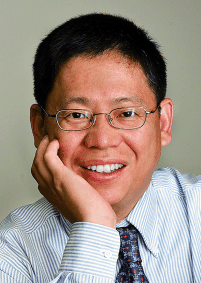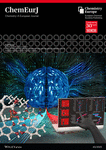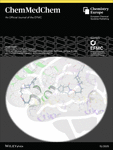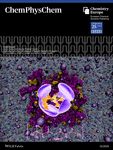Journal list menu
Press Release
Angewandte Chemie International Edition ,
doi: 10.1002/anie.201406740
Nr. 39/2014
November 4, 2014
Entering the Nano Era
From basic research to fad: nanomaterials are on the rise in our day-to-day lives
Contact: Younan Xia, Georgia Institute of Technology, Atlanta (USA)
Registered journalists may download the original article here:
Are We Entering the Nano Era?
Modern hard drives only require an area of a few square nanometers for each bit of information. To protect ourselves from sunburn we use sunscreens that contain nanoparticles of titanium dioxide or zinc oxide. Is this the beginning of the nano era? Younan Xia (Georgia Institute of Technology, USA) pursues this question in his editorial in the most recent edition of the journal Angewandte Chemie, which is dedicated to the topic of nanoscience (free to access until the end of 2014).

© Wiley-VCH
“Before ‘nano’ became a buzzword, people had already used nanomaterials for many decades, if not centuries,” says Xia. “Take for example catalytic converters, which were commercialized in the 1970s.” Our cells also contain nanoscale structures, such as those used for the production of proteins or to generate energy. These have long been the subjects of intensive research. “Nano” is thus not new at all. However, there remains much to discover, to investigate – and to carry over into new areas of application.
“The quantum effect is probably the most exciting gift from the nanoworld,” states Xia. “For example, nanoparticles of the same solid material (so-called quantum dots) give off light of different colors depending on particle size.” This and other phenomena could be used for future electronic or photonic components. On the other hand, some applications benefit when properties remain the same as particles get smaller: although the dimensions of a transistor have shrunk from a few hundred micrometers to 22 nanometers over the last fifty years, they still operate on the same physical principles.
Nanomedicine allows for highly specific diagnosis and treatment on the molecular level. Highly efficient cancer drugs should be able to overcome barriers, recognize malignant cells, and selectively attack them. Says Xia, “A large number of drug delivery systems have been approved for cancer therapy in clinics.” A complex field like nanomedicine requires interdisciplinary teams drawn from chemistry, physics, engineering, biology, genetics, proteomics, radiology, oncology, and public health. One of the biggest challenges is to draw these different people together for true collaboration.
Many nanomaterials have a long way to go to move from the lab to industrial application, because the production of precisely defined nanoparticles on an industrial scale is extremely difficult. In this area, microfluidics technology is turning out to be a highly promising alternative for scalable, reliable, and cost-effective production.
This special edition of Angewandte Chemie includes review articles by leading experts, providing an overview of the latest developments and issues: Harald Krug takes up the theme “Nanosafety Research – Are We on the Right Track”, Jens Rieger and his co-workers present “Formation of Nanoparticles and Nanostructures – An Industrial Perspective on CaCO3, Cement, and Polymers”, Reinhard Niessner discusses “The Many Faces of Soot: Characterization of Engine-released Soot Nanoparticles”, and Frank von der Kammer and his co-workers offer “Spot the Difference: Engineered and Natural Nanoparticles in the Environment – Release, Behavior, and Fate”. Xia and his co-workers contribute “Engineered Nanoparticles for Drug Delivery in Cancer Therapy”.
“From electronics to photonics, information storage, communication, catalysis, energy, medicine, homeland security environment protection, cosmetics, and even building construction, every one of them could benefit from nanomaterials,” concludes Xia. “Only when this relatively new and still seemingly bizarre realm of nano is able to make a positive and long-lasting impact on every aspect of our society, can we finally declare the arrival of the nano era.”
(3830 characters)
About the Author
Dr. Younan Xia is the Brock Family Chair and Georgia Research Alliance Eminent Scholar in Nanomedicine, with joint appointments in Department of Biomedical Engineering and School of Chemistry & Biochemistry at the Georgia Institute of Technology. His research interests include the design and synthesis of nanomaterials for applications related to biomedicine, catalysis, and energy conversion.






































